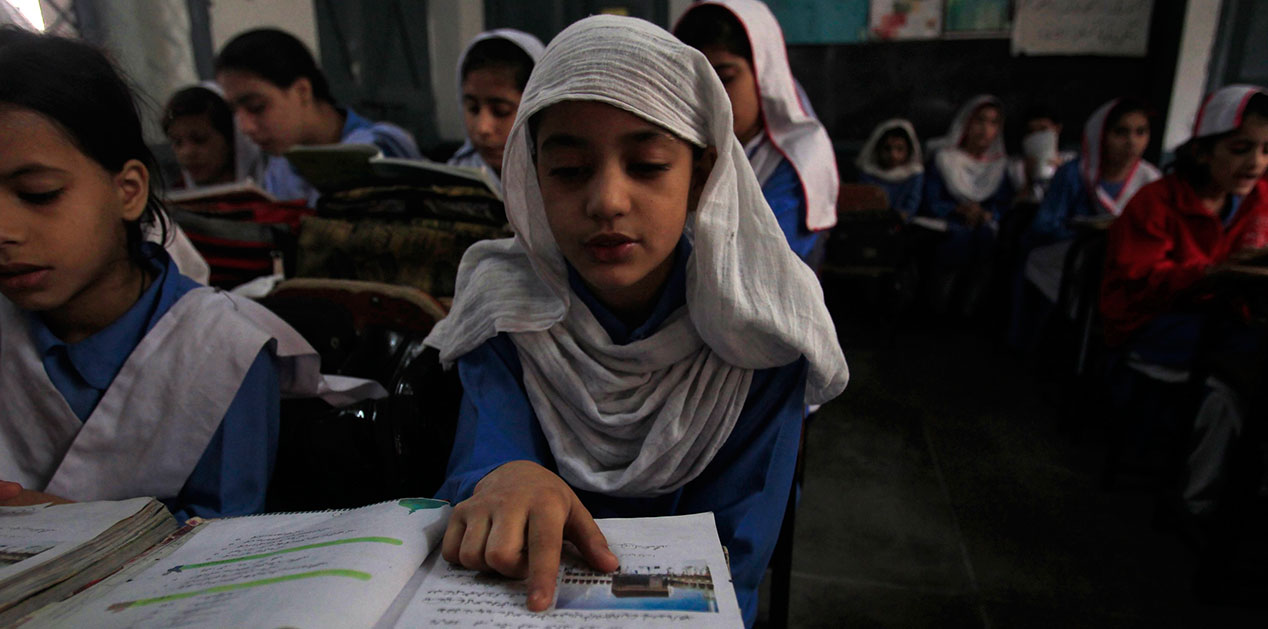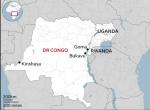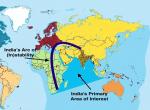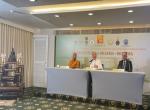Writing of history has always fought the battle of opinions emerging from strands of value laden historians on the one hand and the unnegotiable rule of objectivity on the other. But in the long race for establishment of nation-state and the desire for collective identity, representation of past has been made an instrument to justify the greed of contemporary politics (Hobsbawm, 2008). As cultural theorist Andreas Huyseen said that historical memory is ‘not what it should be’, it is all about our current moment (Murphy, 2012, p. 7). Historical raw material has been authoritatively used to justify the objectives of nationalists’ ideologues, distorted roots of ethnic conflicts and justification of cruel realities of colonialism (Hobsbawm, 2008; Bond & Gilliam, 1994). Such contentions are not any different in the case of South Asian History writing.
Directly or indirectly, colonialism provided the immediate context against which various scholars and national leaders “have pursued strategies to reclaim their past and assert their individual and national identities” (Bond & Gilliam, 1994, p. 3). Such extremism of identity politics was not only canalised in the national policies but also haunted the education system in the name of history telling. In Benedict Anderson’s (2006) imaginings, common language and print media were the tools for nationalism; in current context school text- books and history curriculum have also joined that category. This paper primarily deals with such politics of textbooks, taking the case of Pakistan’s text-books titled as “Pakistani Studies” in curriculum of Classes X, XI and XII.
Compilation of text-books has long been the exclusive right of state authorities and their historical content was the knowledge of power flowing from the polity to the young generation. Ironically, in common understanding, text-books are the ‘official’ knowledge to refer to when need arises during the learning process or at the examination time (Issitt, 2004). In technologically upgraded societies, text-books are considered to be somehow less influence on the young minds as compared to the vast cyber space (Podeh, 2000). That misconception about the effectiveness of the text-books prevents the understanding of the power these exercise in dissemination of historical knowledge and assessment of dialectic linkage between historical (mis)representation and societal formation. Although mostly authored by specific individuals, text-books present the broader cultural impinging and an alternative to government policy documents to channelize thinking. These work as ventures of assembling facts, including or excluding the expectations of the numerous, and representing a sanctioned version of knowledge to the society (Anyon, 1979). In the context of representation of Arab-Israeli conflict in Israeli history text-books, Elie Podeh has expressed grave concerns of text-books failing as a mediator between society and history. As mentioned:
“Interestingly enough, historians and sociologists generally fail to note the political and social links between school text-books and collective memory. Scholars dealing with the tools used by the state to create its own collective memory – such as historiography, literature, cinema or national commemorations - tend to overlook the role played by text-books. At the same time, scholars in the field of text-book research barely analyse them in the context of the attempts to build a collective memory, usually ignoring the social environment that helps shape content as well.” (Podeh, 2000, p. 65).
With the disputed theory of emergence of Pakistan and the ideology of ‘two nation theory’, anxiety of Pakistan to establish an identity different from ‘India’ also led to the ‘conjuring trick’ of historical misrepresentation in its educational system. As Ayesha Jalal expressed, the official discourse of history in Pakistan’s text-books privilege a kind of history that is represented by ‘Us’ and ‘Them’ (Jalal, 1995). Such a style not only fails to critically assess the Pakistani state but also faults the imagination of citizen living within that territory.
The attempt of this paper is to discuss the writing of history in the context of the idea of state, and (mis)representation of the native societies as well as the economy of Pakistan as it is presented in its text-books titled “Pakistan Studies”. It is also to point at the detachment that, in the rush to assert ‘Islamic’ identity, has grown between the native population and the socio-economic realities.
After the break-up of East Pakistan from West Pakistan, the imaginary of Pakistani nation-state required an essential instrument for avoiding any further upsurge of oppositional voices within the land. That immediate necessity spilled over to the education system of Pakistan and for the first time in its education policy of 1972, the subject “Pakistan Studies” was introduced at various levels of education system (Hashmi, 2014). Unlike the other education systems, schools in Pakistan teach no separate disciplines of history, geography or political science as related to the country. According to Abdul Khan, the main purpose of introducing Pakistan Studies was to promote the idea of individuals being proud citizens of Pakistan, to promote social and political consciousness around him, to highlight the importance of establishing a nation-state and finally its relationships around the world (Hashmi, 2014). As mentioned by Abdul Khan, writing of Pakistan Studies text-books for secondary classes is a part of the project on ‘Curriculum Reform under the National Education Policy (1998-2010)’ and is undertaken to give the “students an ideological orientation which they need to conceptualise as young citizen of the state of Pakistan” (Khan, 2014). The objective might appear to bear responsibility towards the citizens of country but further reading of the text highlights the myths and propaganda that the state authorities inflict upon the citizens.
History Writing and State Imaging
The struggle against colonization and the scars of partitions are still alive in the memory of people of Indian sub-continent. The British strategy of divide and rule worked well in manipulating the diversity of Indian subcontinent and finally in constructing two contentious nations of ‘Hindus’ and ‘Muslims’. The demand of distinct Muslim nation was raised in the independence struggle by Sir Sayyed Ahmad Khan whose imaginary of ‘prosperous’ Indian Muslims led the idea of Pakistan. But in the time between the demands of a Muslim nation in Lahore Resolution and the partition at 1947 changed the dynamics of constitution of Pakistan. The peculiarity of Jalibi’s statement illustrates the contradiction through which state of Pakistan still struggles:
“Pakistan was created, even naturalized, as the expression of a nation, but the very nation self-consciously lacked a “national” culture well after founding. ….The solution of to this problem would be to craft a national past for dissemination to citizens of this country, a past which would assert the authenticity of Pakistan as an organic entity with long claims to existence, yet somehow in long phase of dormancy….” (Ayres, 2009, p. 105).
Such dilemma regarding its history of Pakistan manifests in the text-books historiography. According to the Pakistan Studies grade IX and X, the state of Pakistan was established on the basis of ideology of Islam in 1947. The state is the sole reflection of the Islamic society envisaged from the principles and theories of Holy Qur’an and the Sunnah. Further emphasizing the significant role and requirement of ideology in the existence of Pakistani state, it describes common religion and common culture as the contents of the ideology which had made a common cause for the Muslim of South Asia to establish a separate Muslim State (Hashmi, 2014).
Though official historiography in Pakistan unanimously agrees on the birth of the country in 1947, ironically, it traces the idea of Pakistan from the time Arab traders entered in the Indian subcontinent, and its culture from the archives of Indus Valley Civilization (Jalal, 1995). All the historical events shared by the geographical area of Indian sub-continent with regard to Arabs and then the Mughals became the evidences for the story of inevitability and essentiality of Pakistan’s presence. Disregarding the ground realities of diversity within state, historiography of the Pakistan state indulges in selective facts to present itself as a homogenous land of ‘Ummah’, craving for justice against ‘Hindu dominance’.
According to the Pakistani text-books, advent of Islam was a blessing for South Asia as it was divided between ‘cruel and intolerant Hindu rulers’ who gave hard time to the followers of other religion, Buddhism in this case. The society was said to be plagued with the rigid rules of caste and discrimination in Hindu society and intolerance and narrow-mindedness of Hindu rulers which had pushed the minority, lower caste (Shudra) and women to the lowest strata of the society. With the advent of Islam in the sub-continent, it is said that all forms of ‘good’ flowed to the people of land, they got organised under a central government, developed cultural taste for fine arts and systematic dressing, got the taste of equality, fraternity and democracy without any discrimination over caste, race and gender, and finally, united religiously by the influence of Allah against the ambiguity and plight of Hinduism (Rasool, 2013).
There are truths in presentation of Islam and Hindus, but the problem is the exaggerated descriptions to the justification of Islam. The venomous language used against the Hindus troubles the existence of Hindu Minority within the state of Pakistan and closes the space for secularity and democracy as promised by Jinnah in his ideal of Pakistan (Jalal, 1995). The stages of constitution formation in the state history has been represented as hailing the sovereignty of Allah and the establishment of Pakistan as an Islamic republic (Hassan, 2013). It is a reality that Mohammad Ali Jinnah and the Muslim League heavily stressed the necessity of two different nations for the survival of Indian Muslims against the so called Hindu-British nexus of Indian national movement. But by whitewashing Jinnah’s narratives and the anti-Congress expressions, official guardians of Pakistan’s history have manipulated his ideology of Pakistan and have served a corrupted imagery of the nation-state among their young minds. According to Ayesha Jalal and Dr. Parvez Hoodboy, ‘ideology of Pakistan’ was never used as a specific terminology in Jinnah’s narratives, especially with respect to Islam (Paracha, 2012), but Pakistan Studies from Sind textbook Board for class IX-X quotes the Quaid- i- Azam in the meeting of Muslim League 1940 as:
“Hinduism and Islam are not merely two religions but they are two separate social systems. It would be a dream to think that Hindus and Muslims will form a common nation. I want to clear that both the nations belonged to two different civilizations and the foundation of these two civilizations is on such philosophies which are opposed to each other”(Khokhar, 2013, p. 11). It further states the Quaid-i-Azam’s ideology of Pakistan as: “Pakistan had come into being the day the first non-Muslim was converted into a Muslim in India” (Khokhar, 2013, p. 11).
Interestingly enough, the term ‘Pakistan’ for a Muslim nation was never coined by Jinnah or any other leader. It was a geo-political imagining within the premises of university corridors and its academic world by scholar Chaudhry Rahmat Ali. Even Jinnah himself addressed the same issue in the Muslim League session at Delhi (1943) stating that some scholar in London who wanted the particular part of north-west to be separated from the rest of India, had coined the term (Jinnah, 1947, pp. 555-557). The official curriculum not only hails the role of Muslim ‘male’ leaders during the struggle for the making of Pakistan but also traces contribution of leaders like Shah Waliullah and Syed Ahmed Shaheed Barelvi in revival of Islam against the policies of Marathas, Jats and Sikhs (Khan, 2014). These superficial quotations from leaders’ speeches puts to question the methodology, references and interpretation of historical archives as adopted in the Pakistan state’s propaganda.
Of the sovereignty, population and territory attributes of modern state, Pakistani officials forget that at the time of independence the idea of distinct nation-state also existed within the Sindhi Muslims. Sanjay Chaturvedi, reflecting the role of ideas in politics of partition, highlighted the discomfort of Sindhi Muslim leader, Ghulam Hussain Hidaytullah with the idea of one large Islamic province in the north-west. He said, “It would be a political disaster for the Sindhi Muslims to enter into alliance with Punjab Muslims” (Chaturvedi, 2005, p. 119). Against the backdrop of the anxiety over the future of Muslim community in an independent India, several imaginative alternatives of power were also raised. Thus under the leadership of Abdul Ghaffar Khan in the North West Frontier, the Khudai Khidmatgars had preferred to deal directly with the Congress (Chaturvedi, 2005). The internal anomalies and contentions within the Muslim community against formation of the state of Pakistan have been brushed away to promote the improbable notion for a ‘homogenous’ Muslim nation state of Pakistan.
No wonder that international politics too had given a share in the agenda of state formation. A chapter titled ‘Pakistan and the Comity of Nations’ illustrates the aspect of external sovereignty in the international realm. It mentions the maintenance of close relations with Islamic countries as the cardinal principal of foreign policy of Pakistan. The ideal behind such policy is the establishment of universal Muslim brotherhood which actually is contradicted in the foreign policy of the country (Askri, 2013). Weightage given to discussion on the role of Pakistan in the ‘Organisation of Islamic Conference’ in comparison to United Nations and Non-Alignment Movement again go to assert the Foucaultian power-knowledge nexus, where knowledge is twisted to dominate the discourse in the society.
Dubious narratives of creation of Pakistan state and the events of double partition in the history books of Pakistan reflects escapism of the state chroniclers. As mentioned above, in the attempt to explain the ideological and constitutional development of Pakistan state, Pakistani text-books rarely deal with the information regarding the population residing within it and the domestic economy of Pakistan. Discussion of extra–territorial historical events and juxtaposition of Islamic identity with the local imaginary are thus justified by the present necessities. As Ernest Renan said, “Getting a history wrong is an essential part of forming a nation”. It is the ‘professional business’ of historians to satisfy the unsatisfactory present through the reconstruction of the past (Hobsbawm, 2008).
People in History Writing
Writing of history hardly adopts the narratives coming from below. All the history written for the sub-continent in the wake of arrival of Mughals and then the colonial period have a top-down flow, including the accounts of Kings’ officials and British representatives respectively. In the making of a stable state, Pakistani text-books also administer history writing by selecting political events and ignoring the grass-roots inputs. As Hobsbawm quoted, “Most history in the past was written for the glorification of, and perhaps for the practical use of, rulers. Indeed certain kinds of it still have this function” (Hobsbawm, 2008, p. 267). With the first read of the ‘Pakistani Studies’ readers get the impression that all the people belongs to Pakistan have an fixed Islamic orientation and belong to a homogenous entity of Muslim nation. The plight and discrimination inflicted by the feudal elites are presented to the Muslim population as results of Hindu oppression and thus the efforts and sacrifices of all Muslims for the establishment of Pakistan is hailed (Khokhar, 2013). Further, citizens are enjoined to be responsible for the ideological state and thus expected to live according to the principles and practices of Islamic Sharia. They are obliged to sacrifice their lives for the state and enjoined to be loyal and patriotic (Khokhar, 2013). Meanwhile, in discussions of historical achievements, authors are prompted to discuss the culture and attributes of people to confine the diversity only in terms of the language they speak - mainly Punjabi, Sindi, Balochi and Pashto. They then describe a simple, urban oriented life-style of people who are bestowed with qualities of fine arts, distinct festivals and various creative activities. Interestingly, a distinct culture of Pakistan is presented which is said to owe its lineage to the Arab and Turks, thus highlighting the noble qualities that the Pakistani citizens are supposed to possess due to their ancestry of Islamic history (Rasool, 2013). The actual impression of diversity of Pakistan’s demography is however to be found in the alarming percentage of non-Muslim minority population in Pakistan and the migrating population to the neighbouring countries. It is obvious that the Pakistan Studies firstly veil the grass-roots realities of the society and secondly spread misinformation on historical, political and social developments.
Critical concerns in the matters of Balochistan, Shia-Sunni divide, interpretation of Islam and the question of Ahmediyas are absent in the narrative of Pakistan’s power wielders (Ali, 2008; Levesque, 2013). Smooth and superficial explanation of universality of Islamic ideology in Pakistan have triggerd the demand for the rights of non-Muslims and non-Sunni Muslims in the society. Disconcert with the artificial notion of homogeneity and the arrogance of West Pakistan against the people of erstwhile East Pakistan are hidden behind the facade of geographical separation, propaganda of ‘Hindu teachers’, Awami League Party in Bengal and subversion by the Indian Government (Khokhar, 2013, pp. 44-45). Though the text-books hail the principles of democracy and equality in the mandate of Islam, violence on the minority communities and women due to the society’s structural rigidness is missing from the initial stages of learning. Even the ideological purity of Pakistani state forgets to recognize the migration of large Muslim population from independent India to the newly created Pakistan. Thus after discussion on making of Pakistan, the text-books on history jump to the constitutional developments. Avoidance of discussion of the movements of partition and the contribution of communities in sharing the plights without religious distinction and without the intervention of elites, show a lack of ground realities and the suppression of oral histories.
Gramsci has critiqued the exclusion of the ground realities in writing of the struggle In the Croce’s history of Europe and of Italy (Gramsci, 1971). Building on, Gyanedra Pandey has commented over recording the moment of struggle that:
“When history is written as a history of struggle, it tends to exclude the dimension of force, uncertainty, domination and disdain, loss and confusion, by normalizing the struggle, evacuating it of its messiness and making it a part of a narrative of assures advance towards specified resolution” (Pandey, 2001, pp. 4-5).
By the early 1980, a new approach to writing history from ground upwards was lead by Ranajit Guha. That highlighted the inclusion of dormant narratives of tribes, local population and the voices of women into the making of ‘alternative history’. In contrast, the bias of Pakistani text-books with regard to historical struggle, scorching memories of partitions, gender chauvinism and religious fundamentalism highlights motivated history writings and fabricated vision for the future of Pakistan (Hashmi, 2014; Zeenatunnisa, 1989). One can thus easily see in text-books the paradox between hailing the equality of Islam and actual status of women. Issues related to education of girls and their social mobility is simply submerged in their assigned role in the domestic realm (Rasool, 2013). Similarly, the moment of partition has ignored the oral histories of women - to recount the atrocities of state officials and the contradictions and divergences from the state-narrative in the matters of their social deprivation, enforced displacement and violence on both sides of the partitioned border - which should actually constitute the truths of history (Virdee, 2013). Failings in factual representation of ground realities in text-books is also reflected by the minimal and superficial details of economic dynamics of the Pakistan state.
At the end of the analysis of Pakistan Studies text-books, it can be concluded that misrepresentation of past events often entails the use of prejudices and falsification in the explanation of external and internal discrepancies. As Michael Apple opines, though the textbooks are supposed to be a neutral source of objective information, yet these are often used as ideological tools to promote a certain beliefs and to legitimize established political and social order (Apple, 1991). The wider question on the liberal inclusion of knowledge and the true representation of historiography in the text-books are just not the question of writing inclusive history but are acts of responsibility towards future generations and promotion of understanding and critical thinking in the communities of the state. Pakistan has failed to appreciate that.
(Naina Singh is a Research Intern at the Institute of Chinese Studies. She has Masters degree from South Asian University, New Delhi in International Relations and is pursuing MPhil in international Organizations from Jawaharlal Nehru University, New Delhi).
References
- Ali, N., 2008. Ourageous State , Sectarianized Citizens:Deconstructing the 'Textbook Controversy' in the Northen Area,Pakistan. South Asia Multidisciplinary Academic Journal, pp. 1-19, Issue 2.
- Anyon, J., 1979. Ideology and United States History of Textbooks. Harvard Educational Review, 49(3), pp. 361-386.
- Apple, M. W., 1991. The Politics of the Textbook. London: Routledge.
Askri, H., 2013. Pakisatn and the Comity of Nations. In: Pakistan Studies . Hyderabad: Universal Book Depot, pp. 151-165. - Ayres, A., 2009. Speaking Like a State: Language and Nationalism in Pakistan. In: History and Local Absence. Cambridge: Cambridge University Press, pp. 105-138.
Benedict, A., 2006. Imagined Communities: Reflections on the Origin and Spread of Nationalism. London: Verso. - Bond, G. C. & Gilliam, A., 1994. Social Construction of the Past: Representation as Power. London;New York: Routledge.
- Chaturvedi, S., 2005. The Excess of Geopolitics. In: Partitions: Reshaping States and Minds. London: Routledge, pp. 106-137.
- Gramsci, A., 1971. Notes on Italian History. In: Selection from the Prison Notebooks. London: International Publishers, pp. 118-19.
- Hashmi, K., 2014. Contant Analysis of the Provincial Studies. Journal of Education and Social Science, 2(1), pp. 67-77.
- Hassan, M., 2013. Establishment of an Islamic Democratic State. In: Pakistan Studies. Hyderabad: Universal Book Depot, pp. 47-73.
- Hobsbawm, 2008. What Can History Tell Us About Contemporary Society. In: On History. London: Hatchette, pp. 32-48.
- Hobsbawm, E., 2008. On History from Below. In: On History. London: Hatchette, pp. 266-286.
- Issitt, J., 2004. Reflections on the study of Text-books. Journal of the History of Educatoin Society, 33(6), pp. 683-693.
- Jalal, A., 1995. Conjuring Pakisatn:History as Official Immaging. International Journal of Middle East Studies , pp. 73-89, Volume 27.
- Jinnah, M. A., 1947. Some Recent Speeches and Writings of Mr. Jinnah. s.l.:Volume 1. s.l.:S. M. Ashraf..
Khan, A. Q., 2014. Creation of Pakisatan:The Muslim Revivalist Movements in the Subcontinent. In: Pakistan Studies for Secondary Classes. Islamabad: National Book Foundation, pp. 15-48. - Khan, A. Q. 2. P. I. .. I. N., 2014. Preface. In: Pakisatn Studies for Secondary Classes. Islamabad: National Book Foundation.
- Khokhar, F. H., 2013. Constitutional Development in Islamic Republic of Pakistan. In: Pakistan Studies. Karachi: Azam Sons, pp. 38-49.
- Khokhar, F. H., 2013. Ideological Basis of Pakisatan. In: Pakistan Studies. Karachi: Azam Sons, pp. 5-14.
- Khokhar, F. H., 2013. Making of Pakistan. In: Pakistan Studies. Karachi: Azam Sons, pp. 14-38.
- Levesque, J., 2013. Managing DIversity in Pakisatn :Nationalism, Ethinic Politica and Cultural Resistance. South Asia Multidisciplinary Academic Journal, pp. 1-9.
Murphy, A., 2012. Introduction. In: The Materiality of the Past: History and Representation in Sikh Tradition. London: Oxford University Press, pp. 3-20. - Pandey, G., 2001. Introduction. In: Remebering Parition:Violence , Nationalism and History in India. Cambridge : Cambridge University Press, pp. 1-21.
- Paracha, N. F. P., 2012. Smokers' Corner:By the Book. [Online]
Available at: http://www.dawn.com/news/756533/smokers-corner-by-the-book
[Accessed 20 November 2016]. - Podeh, E., 2000. History and Memory in the Israeli Education System:The Portrayal of the Arab-Israeli Conflict in History Textbooks(1948-2000). History and Memory, 12(1), pp. 65-100.
- Rasool, S. A., 2013. The Culture of Pakistan. In: Pakistan Studies. Hyderabad: Universal Book Depot, pp. 92-112.
- Rasool, S. A., 2013. The Establishment of Pakistan. In: Pakistan Studies. Hyderabad: Universal Book Depot, pp. 1-28.
- Scott, D., 2014. Knowledge and the Curriculum. The Curriculum Jounal, 25(1), pp. 14-28.
- Virdee, P., 2013. Remembering Partition: Women,oral Histories and the Partion of 1947. Oral Histories, pp. 49-62.
- Zeenatunnisa, 1989. Sex Discrimination in Education: Content Analyis of Pakistani School Text Books. Working Paper Series, pp. 1-58, Issue 62.
Published Date: 3rd January 2017, Image Source: https://encrypted-tbn1.gstatic.com










Post new comment